
The Enchanting Karkonosze Mountains: A Polish Wonderland
Explore the Karkonosze Mountains in Poland: A blend of natural beauty, thrilling adventures, and rich cultural heritage awaits in this Central European treasure.
Nestled in the heart of Central Europe, the Karkonosze Mountains are a hidden gem in Poland. Known also as the Giant Mountains, this stunning range offers a blend of natural beauty and rich culture. The Karkonosze National Park, part of the UNESCO World Network of Biosphere Reserves, is home to diverse wildlife and rare plant species, making it a paradise for nature enthusiasts and photographers alike. Visitors can explore numerous hiking trails that cater to all levels of adventurers. From the gentle, family-friendly paths to the more challenging routes leading to the peaks like Śnieżka, the highest mountain in the range, there is something for everyone. During the winter months, the Karkonosze Mountains transform into a winter sports haven, with excellent conditions for skiing, snowboarding, and snowshoeing. The region is also steeped in folklore and history. Traditional mountain huts known as 'schronisko' provide a cozy retreat after a day of exploration. Local legends, such as the tale of the Mountain Spirit, add a touch of mysticism to the experience. The picturesque towns of Karpacz and Szklarska Poręba serve as charming gateways to the mountains, offering a variety of accommodations, dining options, and cultural attractions, including museums and historic sites.
Local tips in Karkonosze Mountains
- Visit outside of peak season (July-August) to avoid crowds and enjoy a more tranquil experience.
- Pack layers and waterproof gear, as the weather can change rapidly in the mountains.
- Try the local cuisine, including hearty dishes like 'pierogi' and 'bigos' at mountain huts.
- Take a guided tour to learn about the region’s folklore and history.
- Purchase a map of the hiking trails from local shops or tourist centers for easier navigation.
The Enchanting Karkonosze Mountains: A Polish Wonderland
Nestled in the heart of Central Europe, the Karkonosze Mountains are a hidden gem in Poland. Known also as the Giant Mountains, this stunning range offers a blend of natural beauty and rich culture. The Karkonosze National Park, part of the UNESCO World Network of Biosphere Reserves, is home to diverse wildlife and rare plant species, making it a paradise for nature enthusiasts and photographers alike. Visitors can explore numerous hiking trails that cater to all levels of adventurers. From the gentle, family-friendly paths to the more challenging routes leading to the peaks like Śnieżka, the highest mountain in the range, there is something for everyone. During the winter months, the Karkonosze Mountains transform into a winter sports haven, with excellent conditions for skiing, snowboarding, and snowshoeing. The region is also steeped in folklore and history. Traditional mountain huts known as 'schronisko' provide a cozy retreat after a day of exploration. Local legends, such as the tale of the Mountain Spirit, add a touch of mysticism to the experience. The picturesque towns of Karpacz and Szklarska Poręba serve as charming gateways to the mountains, offering a variety of accommodations, dining options, and cultural attractions, including museums and historic sites.
When is the best time to go to Karkonosze Mountains?
Iconic landmarks you can’t miss
Książ Castle
Explore the grandeur of Książ Castle, a historic gem in Poland surrounded by stunning gardens and rich cultural heritage.

Kamieńczyk Waterfall
Explore Kamieńczyk Waterfall: A Stunning Natural Wonder in the Heart of Karkonosze National Park, Perfect for Hiking and Nature Lovers.
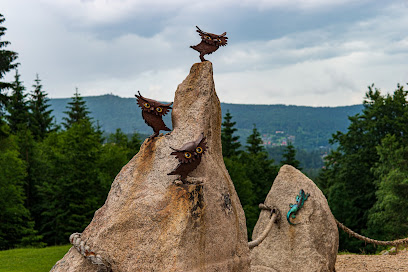
Wang Church
Discover the enchanting Wang Church in Karpacz, Poland, a stunning example of Nordic architecture and rich cultural history amidst breathtaking landscapes.
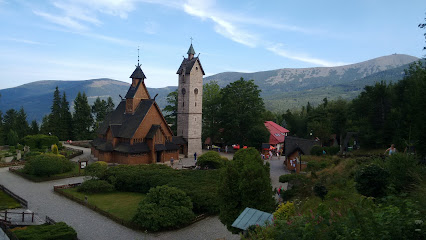
Karkonosze National Park
Explore the breathtaking Karkonosze National Park in Poland, a paradise for hikers and nature enthusiasts with stunning landscapes and diverse wildlife.

The Wild Waterfall
Experience the breathtaking beauty of The Wild Waterfall in Karpacz, a stunning natural attraction surrounded by lush landscapes and majestic mountains.
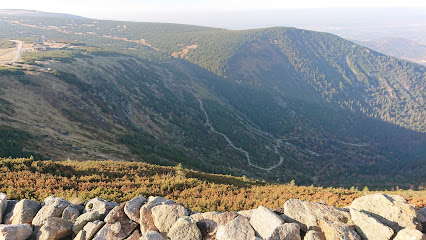
Szklarki Waterfall
Discover the breathtaking Szklarki Waterfall in the Karkonosze Mountains, a perfect blend of nature, adventure, and tranquility in Poland.
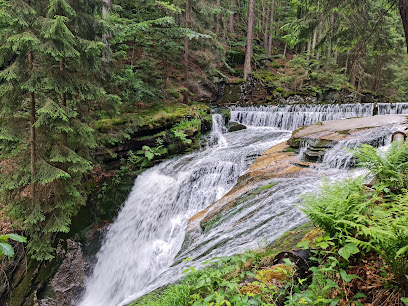
Krkonoše National Park
Explore the stunning landscapes, diverse wildlife, and exhilarating trails of Krkonoše National Park, a natural gem in Czechia.

Chojnik Castle
Discover the enchanting Chojnik Castle, a historical landmark nestled in the Karkonosze Mountains, perfect for hiking and exploring Poland's rich heritage.
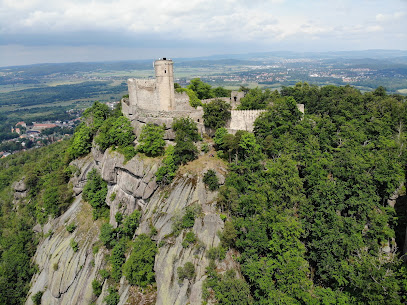
Kolorowe Jeziorka
Discover the breathtaking beauty of Kolorowe Jeziorka, a stunning ecological park in Poland with vibrant, colorful lakes surrounded by lush landscapes.
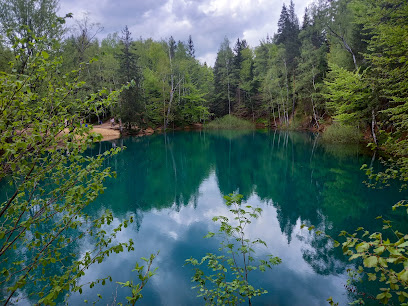
Sněžka
Discover the breathtaking beauty and rich biodiversity of Śnieżka, the highest peak in the Krkonoš Mountains, perfect for adventurous travelers and nature lovers.
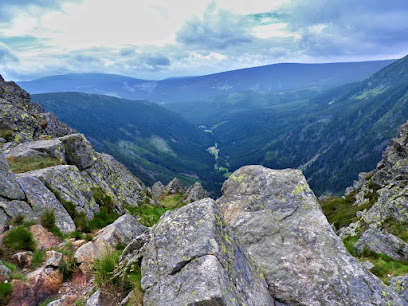
Karkonoskie Tajemnice
Explore the fascinating tales and mysteries of the Karkonosze Mountains at Karkonoskie Tajemnice in Karpacz, a must-visit cultural gem.
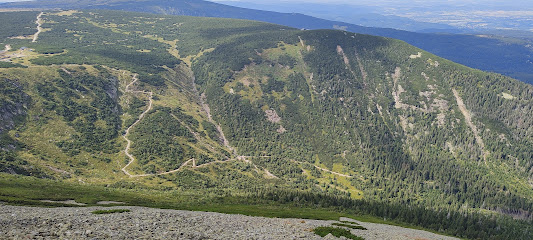
Śnieżne Kotły
Discover the breathtaking views and vibrant nature of Śnieżne Kotły, a must-visit vista point in Poland's stunning Karkonosze Mountains.
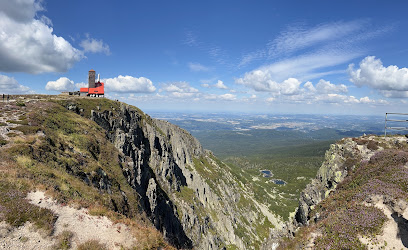
Siruwia Japanese Garden
Experience the serene beauty of Siruwia Japanese Garden, a peaceful oasis showcasing traditional Japanese landscaping amidst Poland's breathtaking mountains.
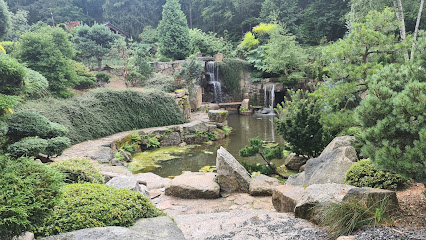
Golden View
Discover the breathtaking beauty of Golden View in Szklarska Poręba, a must-visit scenic spot for nature lovers and photographers in Poland.
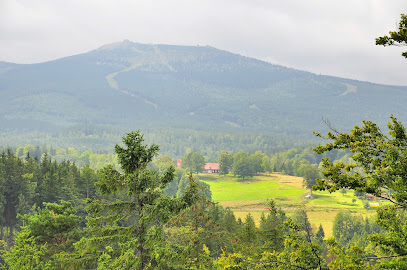
Świat Kolejek
Explore the enchanting world of miniature trains at Świat Kolejek in Karpacz – a delightful adventure for families and children alike.
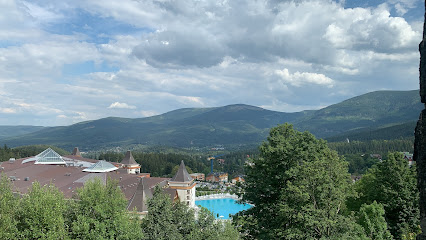
Unmissable attractions to see
Kamieńczyk Waterfall
Explore the breathtaking Kamieńczyk Waterfall in Szklarska Poręba, a natural gem with stunning views and serene hiking trails in Poland.

Kamieńczyk Waterfall
Experience the breathtaking beauty of Kamieńczyk Waterfall in Szklarska Poręba, a must-visit natural wonder in the Karkonosze Mountains.
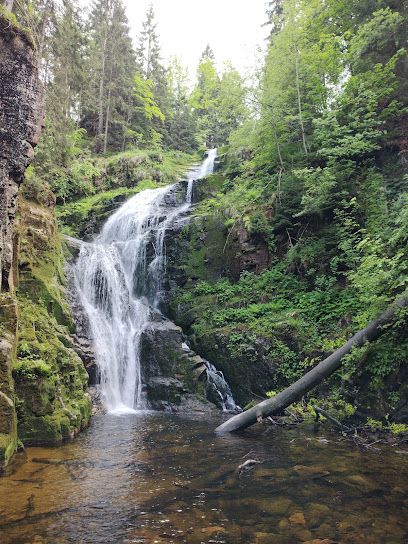
Sněžka
Explore Sněžka, Poland's highest peak, where stunning views, rich history, and endless outdoor adventures await you in the Krkonoš Mountains.
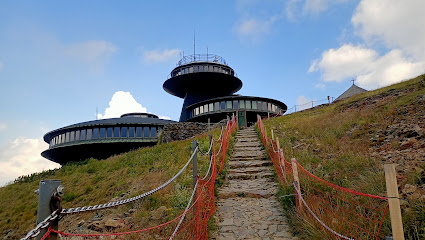
Karkonosze National Park
Explore the breathtaking beauty of Karkonosze National Park, a haven for nature lovers and adventure seekers in Poland, featuring stunning landscapes and diverse wildlife.
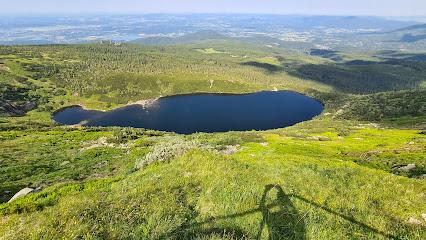
The Wild Waterfall
Discover the enchanting beauty of The Wild Waterfall in Karpacz, a serene natural attraction perfect for nature lovers and families seeking adventure.

Szklarki Waterfall
Experience the breathtaking beauty of Szklarki Waterfall, nestled in the heart of the Karkonosze mountains, perfect for hiking and nature lovers alike.
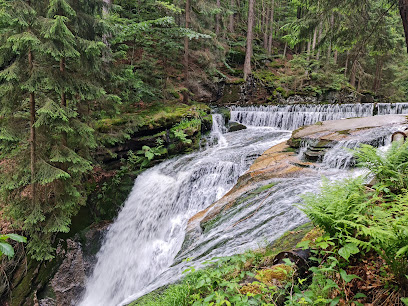
Mumlava Falls
Explore the breathtaking Mumlava Falls in the Krkonoš Mountains, a serene natural wonder perfect for hiking and photography.
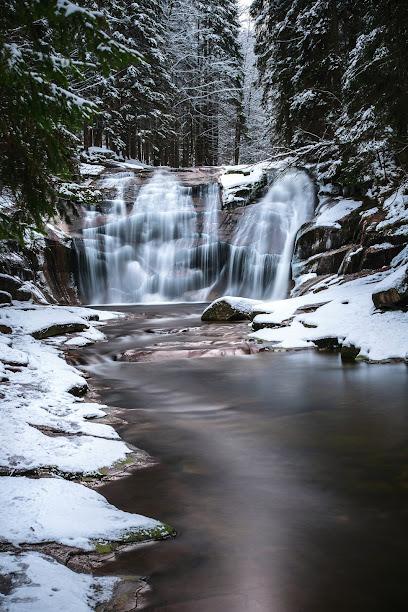
Chojnik Castle
Explore the enchanting Chojnik Castle, a historical gem surrounded by breathtaking hiking trails in Jelenia Góra, Poland.
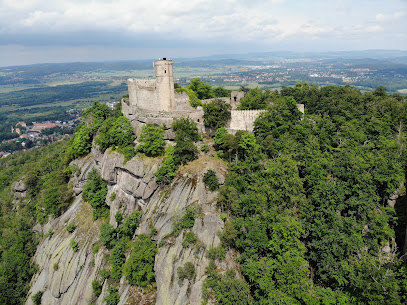
Śnieżne Kotły
Experience the breathtaking beauty of Śnieżne Kotły, a stunning glacial cirque in the Karkonosze Mountains, perfect for exploration and relaxation.
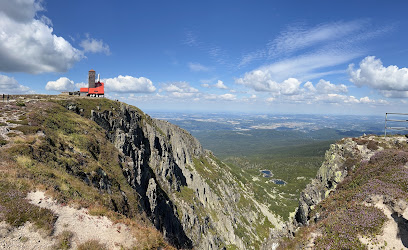
Siruwia Japanese Garden
Discover the tranquil beauty of Siruwia Japanese Garden in Przesieka, a serene escape into nature and Japanese culture.
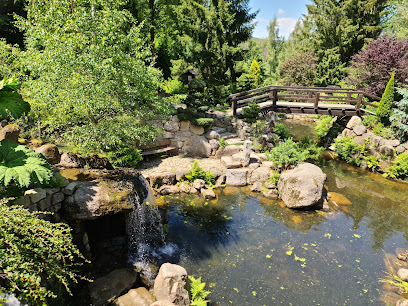
Podgórna Waterfall
Experience the natural beauty of Podgórna Waterfall in the Karkonosze Mountains, a serene oasis perfect for nature lovers and adventurers alike.
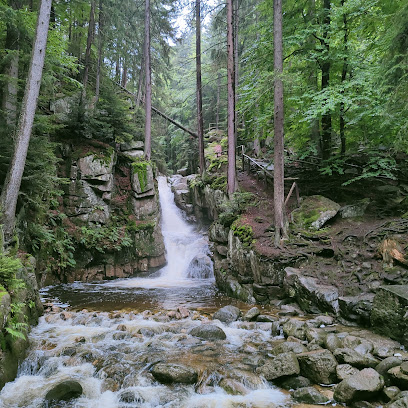
Multimedialne Muzeum Karkonoszy
Experience the rich history and vibrant culture of the Karkonosze Mountains at the Multimedialne Muzeum Karkonoszy in Karpacz.
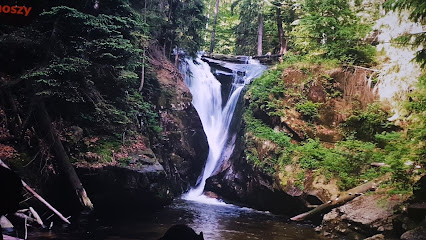
Valdštejn Castle
Discover the enchanting Valdštejn Castle, a historic gem in the Czech Republic, offering breathtaking views and rich cultural heritage.
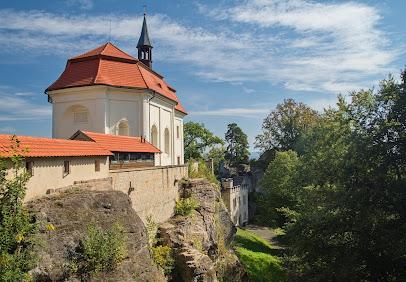
Słonecznik
Explore Słonecznik, a breathtaking tourist attraction near Karpacz, where nature's beauty and outdoor adventures await.
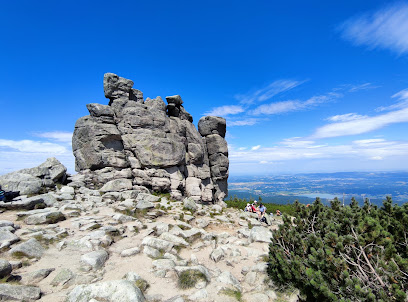
Pancava Falls
Discover the breathtaking Pancava Falls, the tallest waterfall in the Czech Republic, surrounded by enchanting hiking trails and stunning natural beauty.
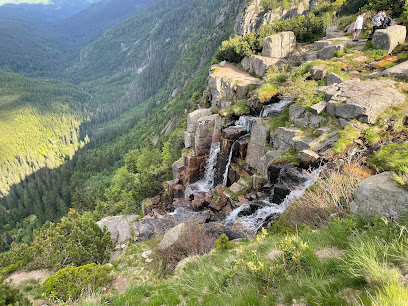
Essential places to dine
Dom Śląski Karpacz
Discover comfort at Dom Śląski Karpacz - your cozy retreat in the heart of Poland's stunning mountain landscape.

Niebo w Gębie
Discover the flavors of Poland at Niebo w Gębie - a culinary gem in Karpacz offering traditional dishes with a modern twist.
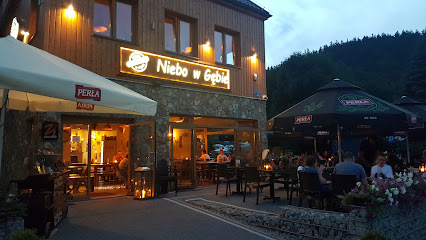
Restauracja u Petiego
Discover exquisite European cuisine at Restauracja u Petiego in Karpacz - where every dish tells a story.
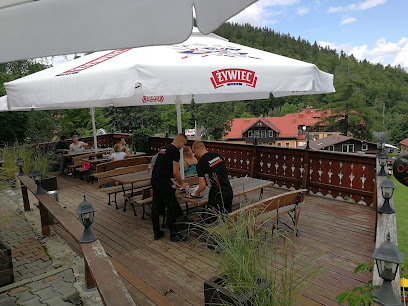
Mazurkowa Chata
Experience authentic Polish cuisine at Mazurkowa Chata in Jelenia Góra – where tradition meets family-friendly dining.

Sowiduch Browar i Restauracja - Karpacz
Discover authentic Polish cuisine and craft brews at Sowiduch Browar i Restauracja in Karpacz - a perfect blend of tradition and hospitality.
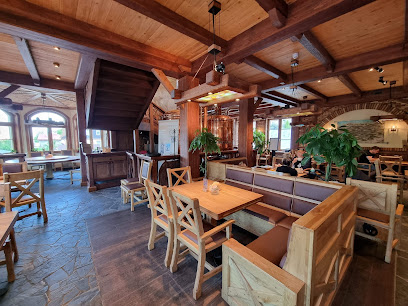
Niebo w gębie
Discover authentic Polish cuisine at Niebo w gębie in Szklarska Poręba – where every dish tells a story.
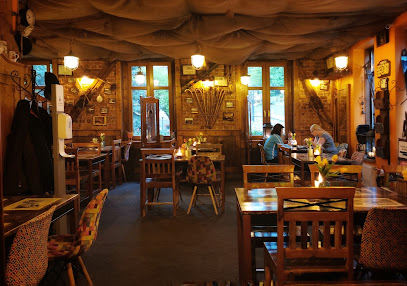
Chata Ducha Gór - Restauracja
Experience authentic Polish cuisine at Chata Ducha Gór in Szklarska Poręba - where tradition meets flavor amidst breathtaking mountain views.

Michałowa Gospoda
Discover authentic Polish cuisine at Michałowa Gospoda in Szklarska Poręba – where tradition meets flavor.
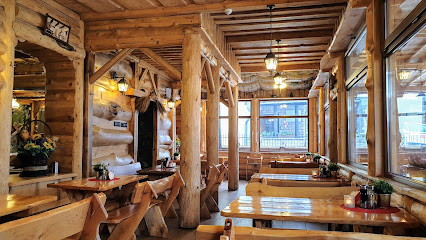
Ruebezahl Court
Discover the essence of Polish cuisine at Ruebezahl Court in Karpacz – where tradition meets taste in every bite.
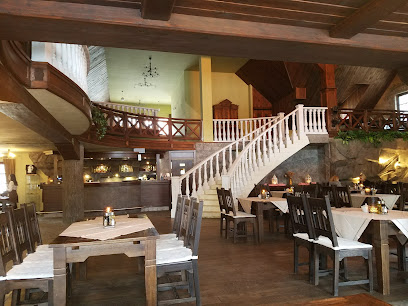
Luke's Mill
Discover Luke's Mill: A delightful restaurant and brewery in Szklarska Poręba offering authentic Polish cuisine and craft beers amidst stunning mountain scenery.
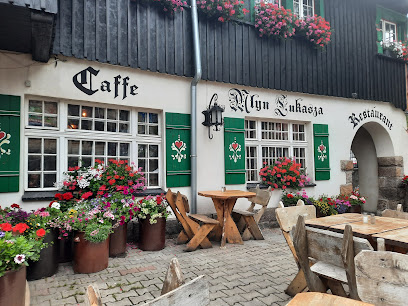
Karczma Karkonoska
Experience authentic Polish cuisine in a charming setting at Karczma Karkonoska in Szklarska Poręba.
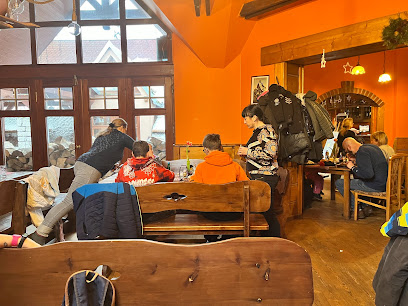
Mamma Mia w Karpaczu
Experience authentic Italian cuisine at Mamma Mia w Karpaczu – your go-to destination for delightful meals and sweet treats in Poland.
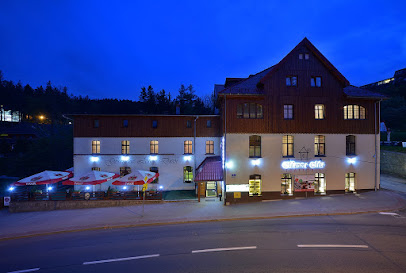
Bistro Na Widoku
Discover the flavors of Poland at Bistro Na Widoku in Szklarska Poręba – where culinary delights meet breathtaking mountain views.
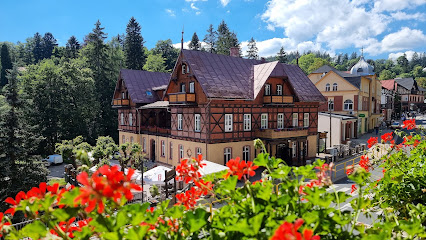
Pod Jesionami
Savor authentic Polish dishes amidst stunning mountain scenery at Pod Jesionami in Karpacz.
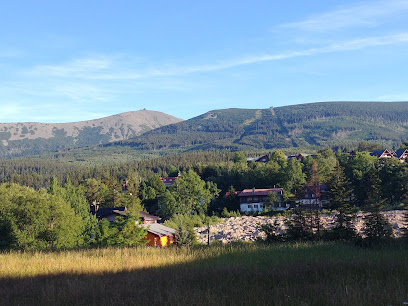
Hotel Restauracja - Pałac Łomnica
Experience luxury and history at Hotel Restauracja - Pałac Łomnica, your ideal retreat in picturesque Łomnica.
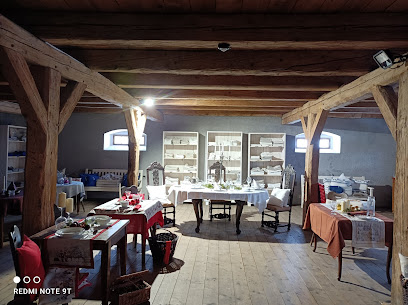
Markets, malls and hidden boutiques
Galeria Szkła - Antyki.xyz
Explore the artistic heritage of Poland at Galeria Szkła, where antiques, glass art, and culture come together in Karpacz.
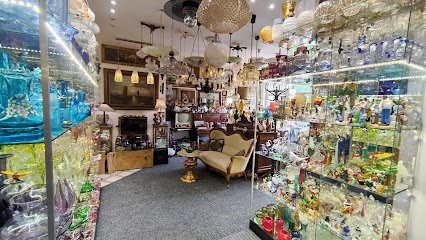
Sweet Factory Store
Explore the Sweet Factory Store in Karpacz for a delightful range of artisanal candies and pastries that showcase local flavors and creativity.
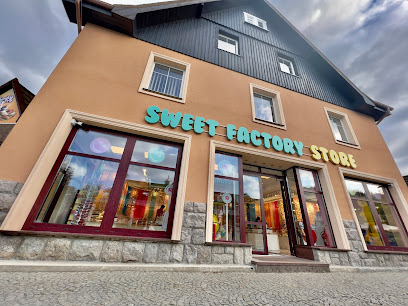
Sklep Regionalny
Discover local delights and unique souvenirs at Sklep Regionalny, your must-visit grocery store in the heart of Karpacz.
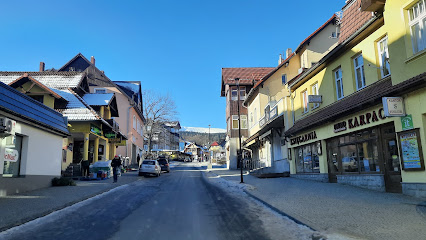
Sklep z pamiątkami. Stroje kąpielowe, upominki. Saneczkowa 1
Explore Karpacz's premier souvenir store for unique gifts, swimwear, and toys that capture the essence of your travels in the stunning mountains.
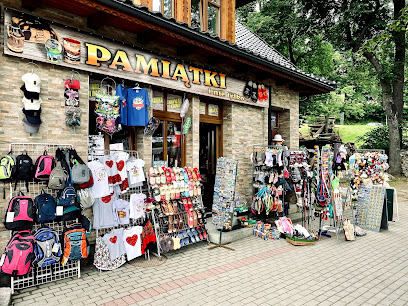
Górska Chata Sklep Regionalny
Explore authentic Polish crafts and local delicacies at Górska Chata Sklep Regionalny in Karpacz, a must-visit destination for every traveler.
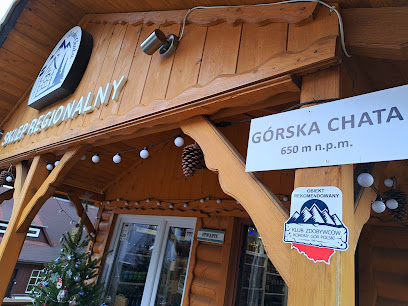
Sklep turystyczny sportowy Adidas Nike Vans Alpine Pro w Karpaczu
Explore the Adidas Nike Vans Alpine Pro Store in Karpacz for top-tier outdoor gear and stylish athletic wear, perfect for your mountain adventures.

SPORTALM STORE
Explore the Sportalm Store for top-quality alpine gear in Špindlerův Mlýn, Czechia – your ultimate destination for outdoor adventures.
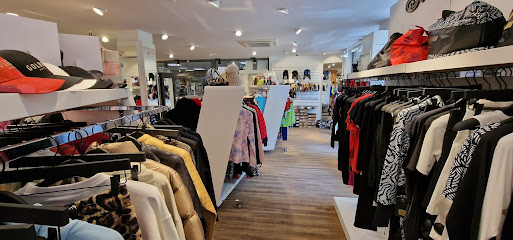
Art-Shop Jolanta Pańczyk
Discover a treasure trove of art supplies at Art-Shop Jolanta Pańczyk in Karpacz, where creativity meets quality and inspiration flows freely.

Drewniane Cuda
Discover your artistic side at Drewniane Cuda, Karpacz’s premier art supply store, offering a wide range of materials and creative workshops.
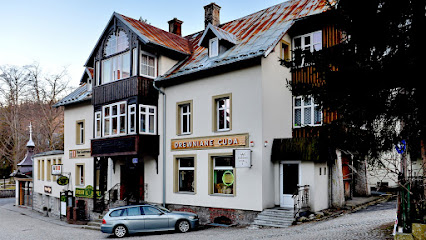
YANOSKYY
Discover the exquisite craftsmanship at YANOSKYY, Karpacz's premier pottery store, where art meets tradition in every unique piece.
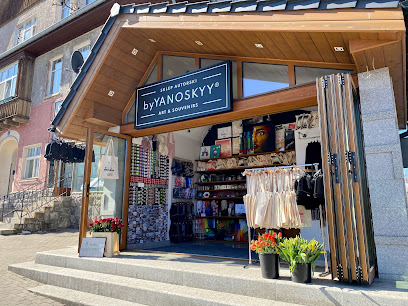
Butik Euphoria
Discover unique fashion at Butik Euphoria, a stylish clothing store in the heart of Karpacz, Poland, perfect for fashion-savvy travelers.

Karkonoski wypożyczalnia sprzętu turystycznego
Discover the Karkonosze Mountains with Karkonoski wypożyczalnia sprzętu turystycznego, your one-stop shop for outdoor gear rentals in Karpacz.
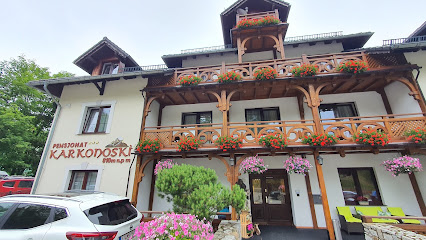
4F/Outhorn/Under Armour
Shop fashionable and functional activewear at 4F/Outhorn/Under Armour in Karpacz, the perfect store for all your outdoor adventures.
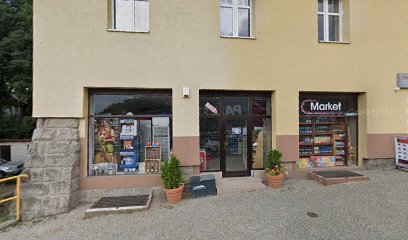
Butik Garderoba Karpacz
Discover unique fashion finds at Butik Garderoba Karpacz, a stylish clothing store in the heart of Karpacz, Poland, perfect for enhancing your travel wardrobe.
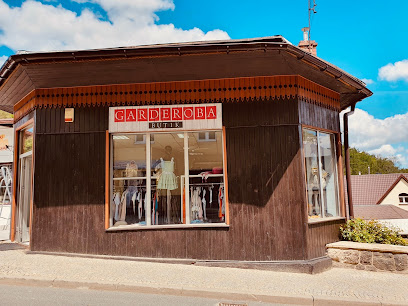
Skarby Karkonoszy - Sklep Regionalny
Explore the rich cultural heritage of Karpacz at Skarby Karkonoszy, your go-to outlet for unique regional crafts and souvenirs.

Essential bars & hidden hideouts
Bar restauracyjny Wrzosówka
Discover the cozy ambiance and delightful flavors of Bar Restauracyjny Wrzosówka, a must-visit bar and lunch restaurant in Karpacz, Poland.
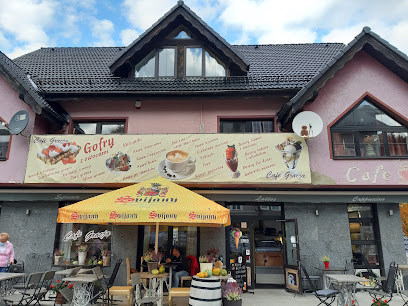
Paddy's Irish Pub
Discover the lively atmosphere and craft beers at Paddy's Irish Pub in Karpacz, a must-visit brewpub for tourists seeking authentic local experiences.

Under Jolly Bear. Barbecue. Iwanowska K.
Experience mouthwatering barbecue delights at Under Jolly Bear, a charming bar in Przesieka, perfect for food lovers and nature enthusiasts alike.

Las Tamas
Experience the best of Karpacz at Las Tamas, a delightful restaurant and cocktail bar offering exquisite cuisine and stunning views in a cozy atmosphere.
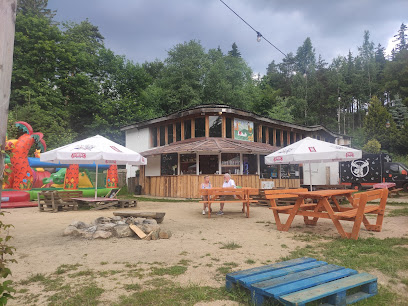
Schronisko Kochanówka
Experience the charm of Polish hospitality at Schronisko Kochanówka, a cozy bar in Piechowice offering local drinks and a welcoming atmosphere.
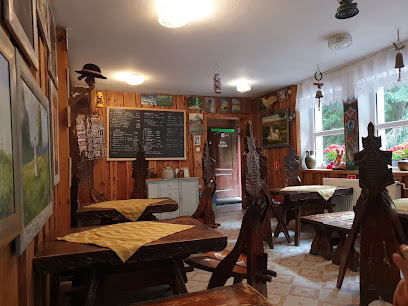
Grill Pub Africa
Discover the lively Grill Pub Africa in Karpacz, where delicious grilled dishes and a warm atmosphere create unforgettable dining experiences.
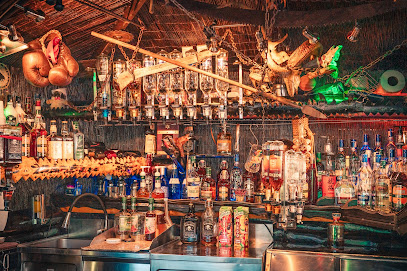
Bar Kawiarnia Przy Kominku
Discover the charm of Karpacz at Bar Kawiarnia Przy Kominku, where cozy vibes and local flavors come together in perfect harmony.
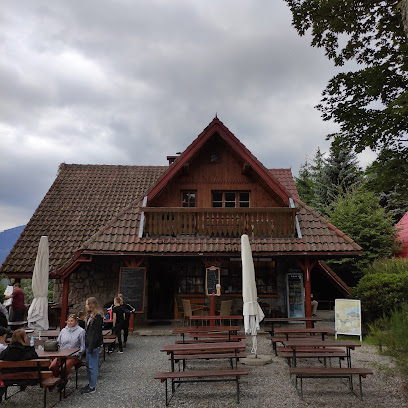
Bar Arenka
Discover Bar Arenka in Karpacz: a vibrant bar with a family-friendly playground, perfect for relaxation and enjoyment for all ages.
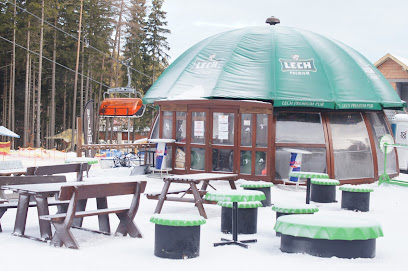
Beer Garden
Experience the vibrant atmosphere and local brews at Jelenia Góra's Beer Garden, a perfect spot for relaxation and socializing.
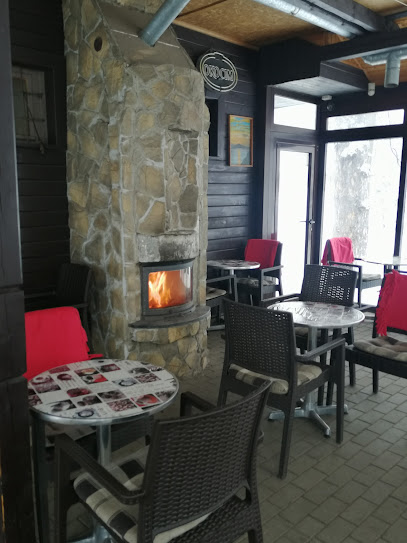
Bar ORLINECZEK
Discover the charm of Bar ORLINECZEK in Karpacz, where local flavors and a cozy atmosphere await tourists and travelers alike.
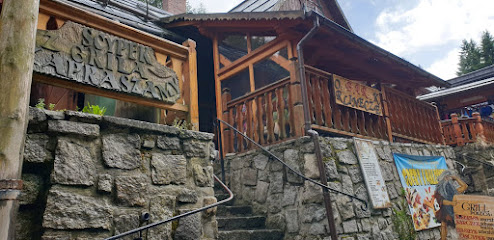
Energy Pub - Cieplice
Discover the lively Energy Pub - Cieplice, where local culture meets vibrant nightlife in the heart of Jelenia Góra.
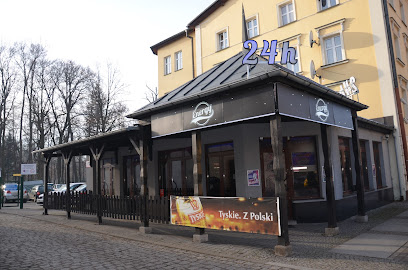
Frytka
Discover the vibrant nightlife of Karpacz at Frytka, where local flavors meet delightful drinks in a cozy atmosphere.
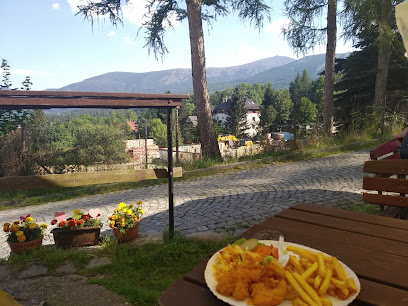
UFO PUB
Discover UFO PUB in Jelenia Góra, a vibrant bar offering a unique atmosphere and an extensive drink selection for an unforgettable night out.
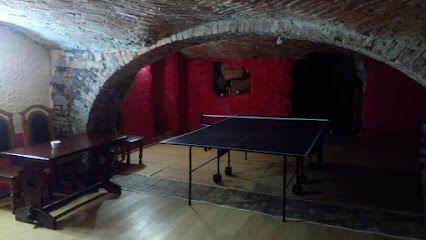
Ptaszarnia
Discover the charm of Ptaszarnia, a cozy bar in Podgórzyn offering a delightful selection of drinks amidst stunning natural beauty.
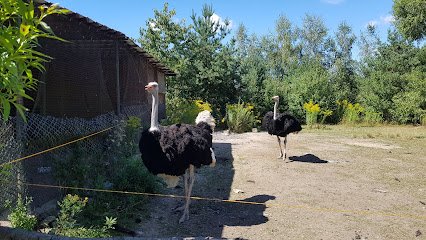
Hennessy Bar
Discover the charm of Hennessy Bar in Špindlerův Mlýn, where exquisite drinks meet breathtaking mountain views in a sophisticated setting.
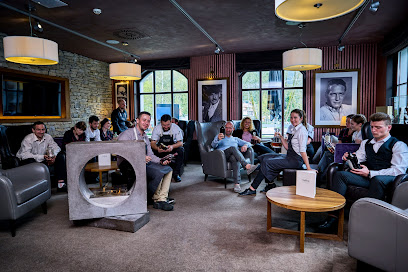
Local Phrases about Karkonosze Mountains
-
- HelloCześć
[che-sh-ch] - GoodbyeDo widzenia
[do veed-zen-ya] - YesTak
[tahk] - NoNie
[nyeh] - Please/You're welcomeProszę
[pro-sheh] - Thank youDziękuję
[jen-koo-yeh] - Excuse me/SorryPrzepraszam
[pzeh-prah-sham] - How are you?Jak się masz?
[yahk sheh mahsh] - Fine. And you?Dobrze. A ty?
[doh-bzeh ah ti] - Do you speak English?Czy mówisz po angielsku?
[chi moo-veesh poh ahn-gyehl-skoo] - I don't understandNie rozumiem
[nyeh roh-zoo-myehm]
- HelloCześć
-
- I'd like to see the menu, pleaseChciałbym zobaczyć menu, proszę
[h-chyah-bim zoh-bah-chich meh-noo, pro-sheh] - I don't eat meatNie jem mięsa
[nyeh yem myeh-sah] - Cheers!Na zdrowie!
[nah zd-roh-veh] - I would like to pay, pleaseChciałbym zapłacić, proszę
[h-chyah-bim zah-plah-cheech, pro-sheh]
- I'd like to see the menu, pleaseChciałbym zobaczyć menu, proszę
-
- Help!Pomocy!
[poh-mo-tsi] - Go away!Odejdź!
[oh-deydz] - Call the Police!Zadzwoń po policję!
[zahdz-von poh po-li-tsyeh] - Call a doctor!Zadzwoń po lekarza!
[zahdz-von poh leh-kah-zah] - I'm lostZgubiłem się
[zgoo-bye-lem sheh] - I'm illJestem chory
[yeh-stem hoh-ri]
- Help!Pomocy!
-
- I'd like to buy...Chciałbym kupić...
[h-chyah-bim koo-peech] - I'm just lookingTylko się rozglądam
[ti-ko shcheh rohz-gwah-dam] - How much is it?Ile to kosztuje?
[ee-leh toh kohs-too-yeh] - That's too expensiveTo za drogie
[toh zah droh-gyeh] - Can you lower the price?Czy można obniżyć cenę?
[chi moo-zh-nah ohb-nee-zh-ch cheh-neh]
- I'd like to buy...Chciałbym kupić...
-
- What time is it?Która jest godzina?
[k-too-ra yest goh-dzee-nah] - It's one o'clockJest pierwsza
[yest pyeh-roo-sha] - Half past (10)Pół do jedenastej
[poo do yeh-den-ah-steh] - MorningRano
[rah-no] - AfternoonPopołudnie
[poh-poo-wood-nyeh] - EveningWieczór
[vyeh-choor] - YesterdayWczoraj
[v-choh-rah-y] - TodayDzisiaj
[dzee-shay] - TomorrowJutro
[yoo-tro] - 1Jeden
[yeh-den] - 2Dwa
[dvah] - 3Trzy
[tshih] - 4Cztery
[ch-teh-ri] - 5Pięć
[pyench] - 6Sześć
[sheh-sh-ch] - 7Siedem
[sh-yeh-dem] - 8Osiem
[oh-shem] - 9Dziewięć
[dzhe-vee-nyench] - 10Dziesięć
[dzhe-shyench]
- What time is it?Która jest godzina?
-
- Where's a/the...?Gdzie jest...
[gdz-yeh yest] - What's the address?Jaka jest adres?
[yah-kah yest ah-dres] - Can you show me (on the map)?Czy możesz mi pokazać (na mapie)?
[chi moo-zhehsh mee poh-kah-zahch (nah mah-pee-eh)] - When's the next (bus)?Kiedy jest następny (autobus)?
[kyeh-dih yest nah-stehp-neh (ow-toh-boos)] - A ticket (to ....)Bilet (do ....)
[bee-leht (doh)]
- Where's a/the...?Gdzie jest...
History of Karkonosze Mountains
-
The Karkonosze Mountains, also known as the Giant Mountains, have been inhabited since prehistoric times. Archaeological findings suggest that early human activity in the region dates back to the Neolithic period. These early settlers were primarily involved in hunting, gathering, and later, basic agriculture.
-
During the medieval period, the Karkonosze Mountains were a crucial part of several trade routes. These routes connected the Czech lands with Silesia and other parts of Poland. The region became known for its bustling trade in goods such as salt, cloth, and metal ores. Ancient paths like the 'Droga Sudecka' were vital for merchants and traders.
-
The Karkonosze Mountains are steeped in folklore, with the most famous legend being that of Rübezahl, the mountain spirit or giant. As a shape-shifting guardian of the mountains, Rübezahl could be both benevolent and vengeful, playing tricks on travelers or helping those in need. This folklore has deeply influenced the cultural identity of the region.
-
The region saw significant mining activities from the 14th century onwards. Silver, copper, and other minerals were extracted, contributing to the local economy. The Industrial Revolution brought about technological advancements that further boosted mining and led to the development of industries in the surrounding areas. Mining towns like Kowary flourished during this period.
-
During World War II, the Karkonosze Mountains were strategically important and witnessed significant military activity. After the war, the region underwent dramatic changes, including the expulsion of the German population and the resettlement of Poles. These changes reshaped the demographic and cultural landscape of the area.
-
In 1959, the Karkonosze National Park was established to protect the unique natural environment and biodiversity of the region. The park covers over 55 square kilometers and is home to diverse flora and fauna, including endemic species. It has since become a popular destination for nature enthusiasts and hikers.
-
Today, the Karkonosze Mountains are a significant cultural and tourist destination. The region boasts a rich heritage of traditional Silesian architecture, local crafts, and festivals. Towns like Karpacz and Szklarska Poręba serve as gateways to the mountains, offering a blend of historical attractions and modern amenities.
Karkonosze Mountains Essentials
-
The Karkonosze Mountains are located in southwestern Poland, near the border with the Czech Republic. The nearest international airport is Wrocław Copernicus Airport, approximately 130 kilometers away. From Wrocław, you can take a train or bus to Jelenia Góra, the main town serving as a gateway to the Karkonosze Mountains. The journey by train takes around 2.5 hours. Alternatively, you can drive to Jelenia Góra, which takes about 2 hours.
-
Jelenia Góra and the surrounding areas offer various transportation options. Local buses and minibuses (called 'busik') connect Jelenia Góra with popular mountain resorts such as Karpacz and Szklarska Poręba. Taxis are also available, but it's a good idea to agree on a fare beforehand. Car rentals are an option if you prefer to explore at your own pace. For hiking enthusiasts, many trails are well-marked and accessible on foot.
-
The official currency in Poland is the Polish Złoty (PLN). Credit and debit cards are widely accepted in hotels, restaurants, and shops in larger towns. However, it's advisable to carry some cash, especially when visiting smaller villages. ATMs are readily available in towns like Jelenia Góra, Karpacz, and Szklarska Poręba.
-
The Karkonosze Mountains are generally considered a safe destination for tourists. However, it's always wise to take standard precautions. Avoid leaving your belongings unattended and be cautious in crowded places. There are no specific high-crime areas targeting tourists, but staying vigilant and aware of your surroundings is always recommended.
-
In case of emergency, dial 112 for immediate assistance. Emergency services, including police, fire, and medical facilities, are available in Jelenia Góra and other larger towns. It's recommended to have travel insurance that covers medical emergencies. Pharmacies are available in most towns for minor health issues.
-
Fashion: Do wear comfortable, weather-appropriate clothing and sturdy footwear, especially if hiking. Avoid overly flashy or revealing attire. Religion: Do respect local customs and traditions, particularly in religious sites. Public Transport: Do be respectful and give up your seat to elderly passengers. Don’t engage in loud conversations on public transport. Greetings: Do greet people with a polite 'Dzień dobry' (Good day) or a simple handshake. Eating & Drinking: Do try local delicacies and accept food offerings graciously. Don’t refuse hospitality, as it is considered impolite.
-
To experience the Karkonosze Mountains like a local, visit the regional markets in Jelenia Góra for fresh produce and local crafts. Engage with locals, who are generally friendly and eager to share stories about the region’s history and culture. Don’t miss the chance to explore the numerous hiking trails, visit the Wang Church in Karpacz, and take a cable car ride to Śnieżka, the highest peak in the Karkonosze Mountains, for breathtaking views.
Trending Landmarks in Karkonosze Mountains
Nearby Cities to Karkonosze Mountains
-
Things To Do in Kutná Hora
-
Things To Do in Wroclaw
-
Things To Do in Prague
-
Things To Do in Dresden
-
Things To Do in Opole
-
Things To Do in Olomouc
-
Things To Do in Brno
-
Things To Do in Plzeň
-
Things To Do in Poznan
-
Things To Do in Karlovy Vary
-
Things To Do in Ostrava
-
Things To Do in České Budějovice
-
Things To Do in Gliwice
-
Things To Do in Leipzig
-
Things To Do in Český Krumlov













